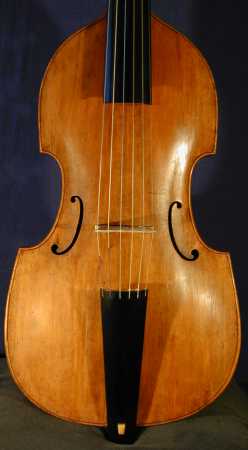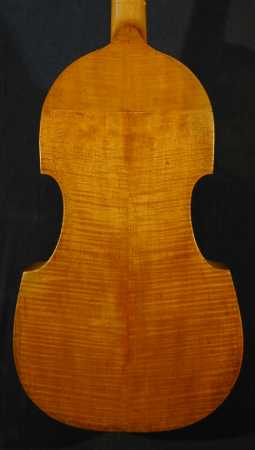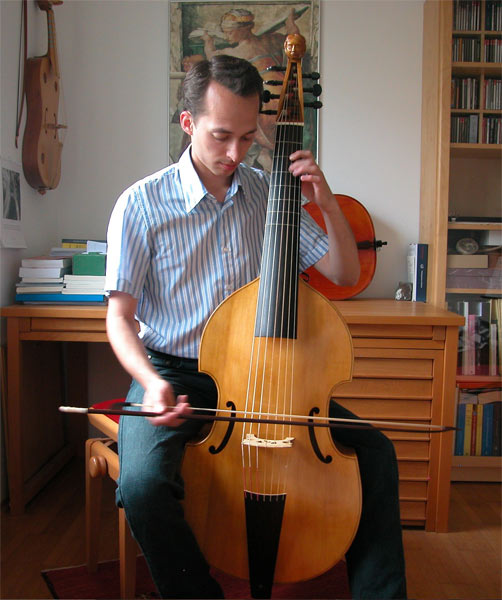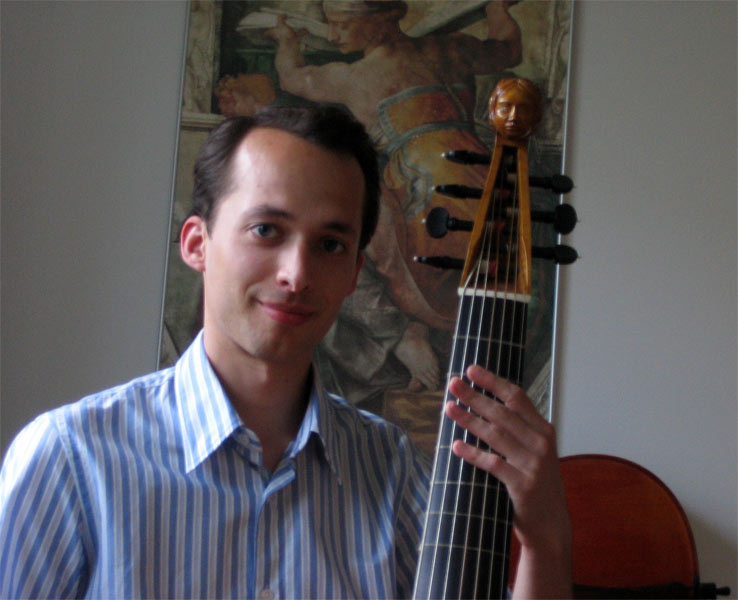bass, by Johann Seeloss
(Linz, 1691)
 |
 |


 |
 |


Wolfram Bauer studies law at the University in Linz, Austria, which does not mean that he does not have time for music or the fine arts: one simply has to make time for this, too. He performs regularly on the viola da gamba, as well as the Baroque violoncello. Wolfram had the bass viola da gamba by Seeloss at his disposal until he finally received - quite recently - this seven-string viol which he can call his own.
At the moment, the viola da gamba by Seeloss is in the hands of Roland Houël, in Mirecourt, France. He, too, is waiting for the completion of his very own viola da gamba, which, by the way, he is making himself! Roland is now on his second year of study at the Violin-making School of Mirecourt. His copy of a viola da gamba by Tielke will soon be finished. Here Roland explains his new theory on the bending of the backs of Tielke viols to the German violin-maker and expert, Marcel Richters, in Vienna, June, 2006.
|
|---|
|
|
Body length 719 mm Upper width 309 mm Middle width 220 mm Lower width 405 mm Rib height 130 mm String length 702 mm
updated03.10.2007